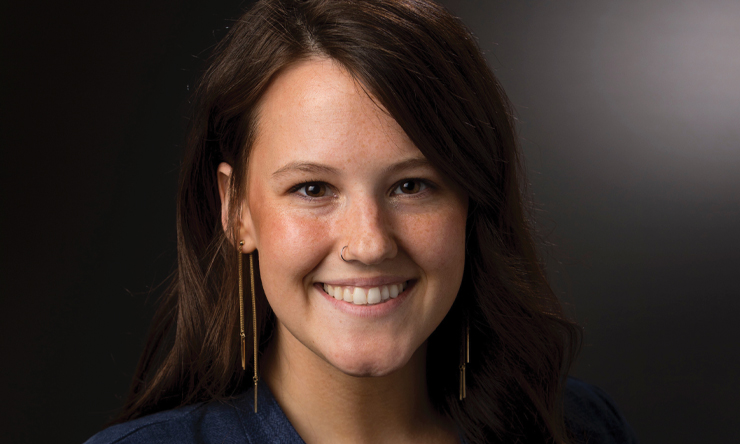Scene Magazine | Summer 2008
Darwin's theory of natural selection is like a recipe with three ingredients. We start with variation. Individuals such as you and I differ in just about anything that can be measured, such as height, eye color, or quickness to anger. Then we add consequences. The differences between you and me sometimes make a difference in our ability to survive and reproduce. Perhaps your superior size enables you to take my stuff or even kill me directly. Perhaps my inferior size enables me to survive the winter on less food. The details depend upon our particular traits and the environments we inhabit. The final ingredient, a sort of yeast that makes the recipe come to life, is heredity. For many traits, offspring tend to resemble their parents. Darwin didn't know how heredity worked in a mechanistic sense, but it was a very well-established fact.
When these ingredients are combined, they lead to a seemingly inevitable outcome. As an example, imagine a population of moths that vary in their coloration (first ingredient). Some are more easily spotted and eaten by predators, removing them from the population (second ingredient). The offspring of the survivors resemble their parents (third ingredient), so the entire offspring generation is more cryptic, on average, than the parental generation. If we repeat the process over many generations, and if nothing else happens to complicate our story, the moths will become very hard for predators to spot. If we could print a picture of each generation on a page and use the stack of pages like a flipbook, the moths would seem to melt into their background. They have acquired a trait that helps them to survive in their environment. In evolutionary parlance, they have increased their fitness and become well adapted.
Is that all there is? Just about. Learning about natural selection is like having a premature orgasm. You think it will take a long time and lead to a tremendous climax, but then it's over almost as soon as it began!
The main question about natural selection is not "What is it?" or "Does it happen?" but "Why is it such a big deal?" To answer this question, imagine that I place an object in your hand, perhaps a glittery rock or a furry mouse, and ask you to explain how it obtained its properties. Before Darwin you would have had only two options. You could say that God designed it according to His intentions. Perhaps the rock is glittery to please the eye and the mouse is a pest to teach us humility. Or you could dismantle it and explain the whole as a product of its parts. Perhaps the rock is glittery because it has quartz crystals and the mouse's fur is made of keratin. The big deal about natural selection is that it provides a third way of explaining the properties of the mouse, although not the rock. You could say that the mouse is endowed by natural selection with properties that enable it to survive and reproduce in its environment.
It is obvious that the natural selection explanation differs from the theological explanation. The fact that it also differs from the material explanation is a bit more subtle. Suppose that I place a clay sculpture in your hand and asked you how it obtained its properties. You would spend most of your time talking about the shape imposed by the artist, not the properties of the clay. The clay permits but does not cause the properties of the sculpture. In just the same way, heritable variation turns organisms into a kind of living clay that can be molded by natural selection. Evolutionists such as myself routinely predict the properties of organisms without any reference to what they are made of, not even their genes.
To illustrate the power of this way of thinking, consider the subject of infanticide. Since natural selection is all about having offspring, it might seem pathological to kill them. Nevertheless, with a little effort you might be able to think of some environmental situations that make infanticide adaptive. In my class I have the students turn to their neighbors to discuss possibilities for a few minutes before telling me their suggestions. They reliably identify the following situations that make infanticide adaptive.
The first is lack of resources. If a mother can't feed herself and care for her existing offspring, then it will not increase her fitness to have new offspring. The second is poor offspring quality. It will not increase the fitness of a parent to raise an offspring that itself is unlikely to survive and reproduce. The third is uncertain parentage. With some important exceptions (read on!), it will not increase the fitness of a parent to raise someone else's offspring. This third situation is confronted primarily by males in mammals such as ourselves, but a female bird can also be "duped" by another female who lays eggs in her nest.
My students (and perhaps you) did very well, since these are indeed the "big three" situations that favor the evolution of infanticide, according to scientists who actually study the subject. The message of this exercise is simple but profound: How did my students become so smart? They hadn't read anything on infanticide, and I certainly hope that they hadn't experienced it for themselves. Their evolutionary training had only just begun, but even a tiny bit enabled them to become experts, honing in like heat-seeking missiles on the predictions that are made by the experts. That is the power of natural selection thinking that makes it such a big deal.
My students had also become taxonomic experts. They didn't need to be entomologists, ichthyologists, herpetologists, ornithologists, or mammalogists to say something important about insects, fish, reptiles, birds, and mammals. Natural selection thinking is based on the relationship between an organism and its environment, regardless of its taxonomic identity.
Even better, my students became experts without any knowledge of the physical makeup of organisms. In any particular species, infanticidal behavior will be caused by physical mechanisms that work through certain pathways, but we don't need to know this to predict the occurrence of the behavior. As long as we have the living clay of heritable variation, we can make predictions based on the shaping influence of natural selection.
Finally, we can repeat the exercise to become expert on an infinite number of other subjects. Why are males larger than females in some species and the reverse in others? Why are there two sexes in the first place? Why are males and females born in equal proportions in some species but not others? Why do some organisms reproduce once and then die, while others reproduce at repeated intervals? Why do some plants live three weeks and others three thousand years? Why are some organisms social and others solitary? Among social organisms, why do some individuals cooperate and others cheat? Questions such as these are truly without end.
Soon I will add some qualifiers to the power of natural selection thinking, but for now we should pause to appreciate its amazing explanatory scope. I began this book by saying that just about anyone can become an evolutionist by learning to think like Darwin. This might have seemed crazy, but now I hope you can see that it is the core idea of natural selection that we need to learn, and it is powerful even in its most rudimentary form. This was true even for Darwin, who recalled his moment of insight as if struck by a bolt of lightning.
I can remember the very spot in the road, whilst in my carriage, when to my joy the solution occurred to me.... The solution, as I believe, is that the modified offspring of all dominant and increasing forms tend to become adapted to many and highly diversified places in the economy of nature.
Before this insight, Darwin had been struggling with thousands of bits of information that refused to fit together. Then he saw they could become one big picture like a jigsaw puzzle. No wonder that he used the word "joy" to describe the experience!
I also experience joy as I survey the length and breadth of creation, dropping in on subjects and organisms that strike my fancy: shyness and boldness in fish on Monday, egg laying in birds on Tuesday, human gossip on Wednesday. It's a joy just to think about such different things as part of a single picture, but it's a special delight to work on them at the professional level, discovering new pieces and how they fit together for the first time. How amazing that virtually all of us can begin to expand our horizons and fit the pieces of our world together on the basis of such a simple idea.
From "Evolution for Everyone-How Darwin's Theory Can Change the Way We Think About Our Lives" by David Sloan Wilson, ©2007 by David Sloan Wilson. Used by permission of Dell Publishing, a division of Random House, Inc.
News
Share This Story



